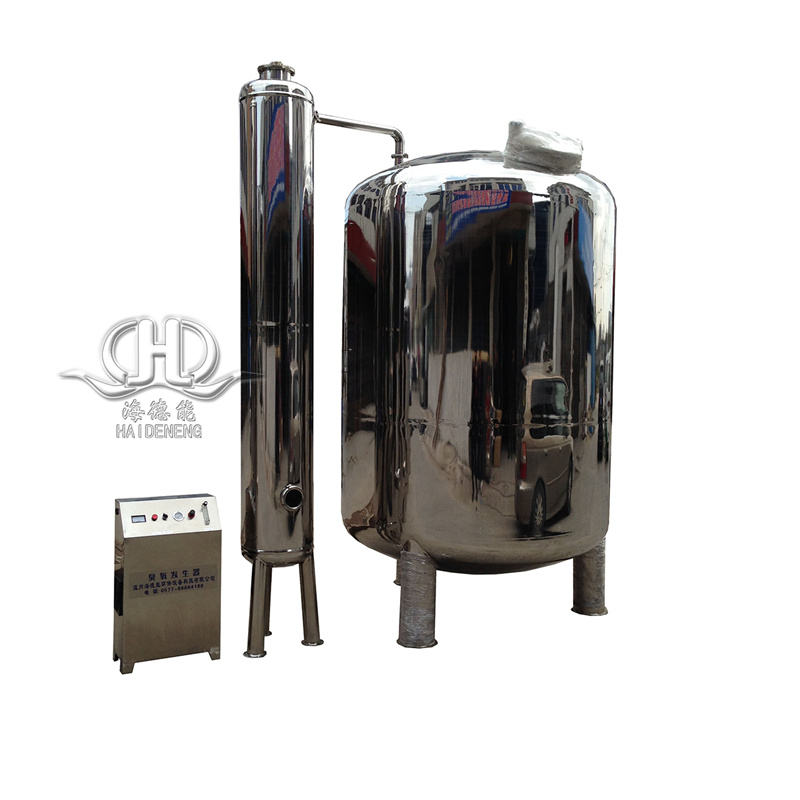Fully Automatic Ultrafiltration Purification Water Treatment System
Product description
System Components
- Raw Water Inlet and Pretreatment Section
- Coarse Filter: Usually a screen or a mesh filter at the raw water inlet to remove large debris such as twigs, leaves, and large particles. This protects the subsequent components of the system from damage.
- Multimedia Filter: Comprises layers of different materials like quartz sand, anthracite coal, and garnet. It further removes suspended solids, turbidity, and some colloidal substances from the water.
- Activated Carbon Filter: Utilizes activated carbon to adsorb organic compounds, residual chlorine, odors, and color from the water. Residual chlorine can damage the ultrafiltration membrane, so its removal is crucial.
- Softener (Optional): In cases where the raw water has high hardness, a softener using ion exchange resins can be installed. It replaces calcium and magnesium ions with sodium ions, reducing the water’s hardness and preventing scale formation in the system.
- Ultrafiltration Module
- Ultrafiltration Membranes: These are the core of the system. Ultrafiltration membranes have pores typically in the range of 0.01 to 0.1 microns. They can effectively remove bacteria, viruses, colloids, macromolecular organic substances, and suspended solids from the water. The membranes are often made of materials like polyvinylidene fluoride (PVDF), polysulfone (PS), or cellulose acetate.
- Membrane Housing: Holds the ultrafiltration membranes and provides a sealed environment for the filtration process. It is usually made of durable materials such as stainless steel or engineering plastics.
- Pump: A high-pressure pump is used to drive the water through the ultrafiltration membranes. The pressure ensures that the water passes through the pores of the membrane while the contaminants are retained.
- Backwashing and Cleaning System
- Backwashing Pump: Periodically, the ultrafiltration membranes need to be cleaned to remove the accumulated contaminants on their surface. The backwashing pump reverses the flow of water through the membranes to flush out the trapped particles.
- Chemical Dosing System (Optional): For more thorough cleaning, chemical cleaners such as acids, alkalis, or detergents can be dosed into the system. This helps to remove stubborn contaminants that cannot be easily removed by simple backwashing.
- Automatic Control System
- Sensors: The system is equipped with various sensors, including pressure sensors to monitor the pressure drop across the filters and membranes, flow sensors to measure the water flow rate, and turbidity sensors to assess the water quality.
- Programmable Logic Controller (PLC) or Microcontroller: This is the brain of the automatic control system. It receives signals from the sensors and controls the operation of pumps, valves, and other components. For example, it can automatically initiate a backwashing cycle when the pressure drop across the membranes exceeds a certain threshold or stop the system in case of a malfunction.
Working Principle
- Filtration Process: Raw water enters the system and first passes through the pretreatment section to remove large and small particles, organic matter, and other contaminants. Then, the water is pumped into the ultrafiltration module. Under pressure, the water molecules pass through the pores of the ultrafiltration membranes, while the larger contaminants are retained on the surface of the membranes. The filtered water, also known as the permeate, is collected and can be further treated or used directly depending on the application.
- Backwashing and Cleaning: As the ultrafiltration membranes operate, contaminants accumulate on their surface, increasing the pressure drop across the membranes. When the pressure drop reaches a preset value, the PLC initiates a backwashing cycle. The backwashing pump reverses the flow of water through the membranes, flushing out the trapped particles. In some cases, chemical cleaning may be required to remove more stubborn contaminants.
Advantages
- High Filtration Efficiency: Can effectively remove a wide range of contaminants, providing high-quality purified water.
- Automation: Reduces the need for manual operation and monitoring, saving labor costs and reducing the risk of human error.
- Membrane Longevity: The automatic backwashing and cleaning system helps to extend the lifespan of the ultrafiltration membranes by preventing excessive fouling.
- Flexibility: Can be customized to meet different water quality requirements and flow rates, making it suitable for various applications such as industrial water treatment, drinking water purification, and wastewater reuse.
Applications
- Industrial Water Treatment: In industries like electronics, pharmaceuticals, and food and beverage, ultrafiltration systems are used to produce high-quality process water. For example, in the electronics industry, it can be used to remove particles and impurities from water used for cleaning semiconductor wafers.
- Drinking Water Purification: Can be used in households, communities, or small water treatment plants to purify water for drinking purposes. It can remove bacteria, viruses, and other harmful substances, ensuring the safety of the drinking water.
- Wastewater Reuse: In wastewater treatment plants, ultrafiltration can be used as a pretreatment step for further advanced treatment processes such as reverse osmosis or as a standalone process for reusing treated wastewater for non-potable applications like irrigation or industrial cooling.
Write your message here and send it to us











